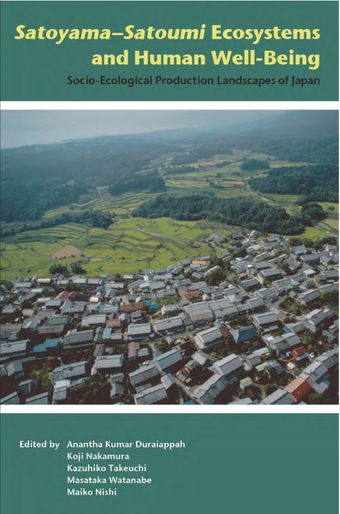Hokushinetsu cluster

- Authors: Koji Nakamura and Shigeyuki Yamamoto
- Main Title: Satoyama-Satoumi Ecosystems and Human Well-Being , pp 307-327
- Publication Date: April 2013
- DOI: https://doi.org/10.18356/3247d664-en
- Language: English
The Hokushinetsu cluster covers the region on the Sea of Japan side (Fukui, Ishikawa, Toyama and Niigata Prefectures) commonly known as Hokuriku and the inland area of Central Japan (Nagano Prefecture) known as Shinshu. The total area mass is 3,880,000 ha. The Tsushima Warm Current flows northward along the coasts of Sea of Japan and the seasonal winds from the Asian Continent run into approximately 3,000 metre high mountains behind the coast. This condition brings frequent and heavy rain and snow. The cluster houses various climatic divisions from warm temperature zones (low land) to cold zones (alpine), and acts as a transition zone from a warm temperature zone to a cold zone. The climate of Hokuriku is mild with abundant annual precipitation with heavy snow in winters. Regional differences between Hokushinetsu and metropolitan areas widened when the capital and people moved to metropolitan cities on the Pacific Ocean side during and after the rapid economic growth of the 1960s. Depopulation and the ageing of the population are serious problems in this cluster. The national population ageing rate is at 22.7 per cent, whereas Hokushinetsu is at 25.3 per cent (7,605,000 people), Ishikawa Prefecture is at 23.4 per cent and Noto region is at 33.5 per cent (2009).
© United Nations
ISBN (PDF):
9789210552905
Book DOI:
https://doi.org/10.18356/5d7e4936-en
Related Subject(s):
Environment and Climate Change
Sustainable Development Goals:
Countries:
Japan
-
From This Site
/content/books/9789210552905c011dcterms_title,dcterms_subject,pub_keyword-contentType:Journal -contentType:Contributor -contentType:Concept -contentType:Institution105
/content/books/9789210552905c011
dcterms_title,dcterms_subject,pub_keyword
-contentType:Journal -contentType:Contributor -contentType:Concept -contentType:Institution
10
5


